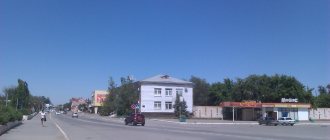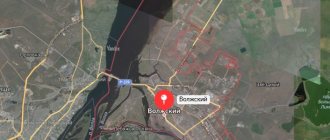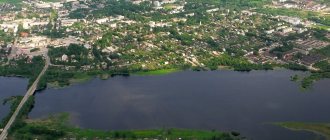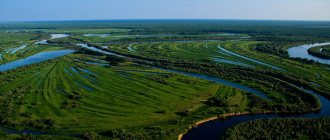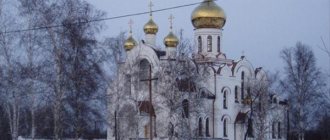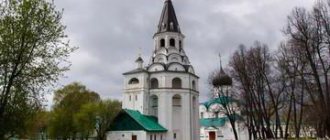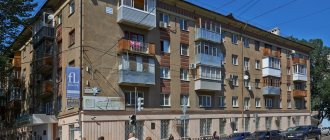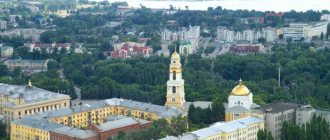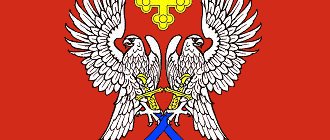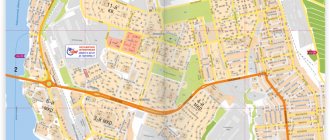- August 2, 2019
- Regions
- Anisimova Svetlana
The history of Yekaterinburg is closely connected with the most important events of the country. It was founded in November 1723 by decree of Peter I. Two outstanding personalities took an active part in the founding of the city - Vasily Tatishchev and Georg de Gennin. It was created as a fortress plant on the eastern slope of the Middle Urals, near the Iset River. Here, for the first time in Russia, a state-owned ironworks was built, which produced high-quality iron, in demand not only in Russia, but also abroad.
early years
The history of Yekaterinburg is closely connected with the Iset River, which since ancient times has served as a transport route to the Siberian lands. On the territory of the Modern City, archaeologists discovered a settlement that was here in the 6th millennium BC. Its location is next to the rock massif called “Palkinsky stone tents”.
The rocks served as a natural fortification for the settlement, in which dwellings were discovered; ancient metallurgists who smelted copper lived in them. This is confirmed by the figurines of animals, birds, arrowheads, and household items found here, smelted from this material. Iron products belong to a later period. Presumably the settlements found in the area were destroyed by fires or raids by other tribes.
There were no cities in these places before the Russians arrived here. The lands of the Middle Urals were practically uninhabited; local peoples were united into tribes that wandered and were engaged in cattle breeding.
The first Russian settlers
Officially, the settlement of Siberia by Russians is considered to be after Ermak’s campaign in 1580. But before this time, the Russian people, having overcome the Ural Mountains, went to Siberia. These were commercial hunters, runaway peasants and criminals. Most of them remained on the eastern slopes of the Urals, where the history of Yekaterinburg began. Service people and Cossacks built fortresses, near which settlers built housing, plowed the land, and raised livestock.
Only after these lands became the subject of interest of the Russian state, which financed the construction of fortresses with garrisons that protected the population from the raids of nomads, people from the Northern Urals, where the cold climate did not allow farming, and from other regions of Russia, flocked to these places. The settlement was spontaneous and regulated by the government.
The Ural land, rich in natural resources, attracted enterprising people here. The government, encouraging the resettlement of people to the Urals and Siberia, issued loans and exempted people from taxes. But the predominant one was the spontaneous resettlement of peasants. In addition to the Russians, the Komi-Zyryans, Tatars, Bashkirs, and Chuvashs came to the Urals. By the beginning of the 18th century, the main part of the Middle Urals was populated. The population here was mostly from the mining industry.
The first villages and factories
The history of the city of Yekaterinburg began in 1672, when the village of Shartasha was founded by Old Believers. Ten years later, the settlements of Upper and Lower Uktus appeared, which were located on the territory of the Chkalovsky district of the city. In 1702, a state-owned ironworks was built near Nizhny Uktus. For its work, a dam, blast furnaces, hammers, a forge, as well as a mill and a crushing mill were built. Barns were built to store raw materials and furs. In 1704, the Shuvakish iron plant began operating.
In 1701, Demidov, a Tula gunsmith, was given state-owned iron factories in Verkhoturye, on the Neiva River. For them he had to pay the treasury in iron for 5 years and received permission to buy serfs. Over the course of 10-15 years, the Demidov factories began to produce 2/3 of all iron smelted in Russia. They sold it at almost half the price of state-owned factories, which was served by high productivity, as a result of the brutal exploitation of serf workers.
Coat of arms
The coat of arms of Yekaterinburg is presented in the form of a shield topped with a tower crown with five teeth and a laurel wreath. He is held by a bear and a sable, wearing collars of black and gold squirrel fur. They stand on a base in the form of a yellow metal band. In the middle of it is a druse with five crystals.
On the green background of the shield, in the upper part, there is a mining shaft, a smelting furnace with a red fire inside. At the bottom (on the yellow field) there is an azure wavy belt. It is bordered and divided by silver.
The coat of arms was adopted by Decision of the Yekaterinburg City Duma No. 43/1 of July 23, 1998 (as amended on May 23, 2008). Included in the State Heraldic Register of the Russian Federation under No. 401.
Tatishchevsky project
It was up to the representative office sent by Peter I to deal with the poor performance of state-owned enterprises. It was headed by mining engineer I. Biller and government official and statesman V. Tatishchev, one of the founders of the city of Yekaterinburg. On their initiative, the Siberian Oberbergamt is being created here, the purpose of which is to centralize the management of state-owned enterprises in the Urals and Siberia.
Based on the results of the inspection, Tatishchev wrote a report in which he expressed dissatisfaction with the work of state-owned factories, indicating that the location for the construction of the Uktus plant was chosen incorrectly. The Uktuska River, on which the dam was built, was shallow. During the hot summer and winter, the plant stood idle due to lack of water. In addition, the village of Verkhniy Uktus was burned by the Bashkirs, dissatisfied with the construction of the plant in their nomadic place. The population fled to the protection of the walls of the Uktus state-owned plant, which was also damaged.
The founding of Yekaterinburg is considered to be the time when, by decree of Tsar Peter I, the construction of the largest iron plant at that time was to begin. The initiative came from V. Tatishchev, who made calculations and justified the need for its construction.
He came to the conclusion that the reconstruction of old enterprises was unprofitable, since he believed that the construction of a new large plant would give better results and would be cheaper for the treasury. Its launch will mark the year of the founding of Yekaterinburg. In addition, Tatishchev pointed out the monstrous exploitation of workers at Demidov’s factories, who were in the position of slaves, and that most of them were runaway peasants.
The industrialist Demidov was dissatisfied with the Tatishchev project, for whom it was not profitable for state-owned enterprises to work well. He wrote a letter to the sovereign, in which he slandered Tatishchev, the latter was removed from business and an investigation began. De Genning stood up for him and the construction of the plant received the support of the emperor. A huge fine was imposed on Demidov.
Ekaterininsky Ironworks
When and by whom was Yekaterinburg founded? The founding of the city is associated with the construction of a state-owned plant according to Tatishchev’s plan. Mining engineer de Gennin was entrusted with managing the construction. In February 1723, he received permission to build a metallurgical plant on the Iset River. In the spring of 1723, construction of the state-owned Ekaterininsky plant began on its banks, rich in timber and ore. The plant-fortress received its name on the initiative of the same de Gennin, who was a friend and ally of the king.
By mid-autumn, a test launch of the hammers took place. This day - November 7, 1723 - is considered the founding date of Yekaterinburg. Subsequently, it becomes one of the largest metallurgical plants in the Russian Empire. Thousands of state peasants, attracted from all over Russia, and settlers who were looking for a better life in these places took part in its construction. Not only Russians worked here, but also representatives of many peoples of Russia.
Healthcare
There are 34 municipal medical institutions in the city, and federal centers for diagnostics and prevention. Medical centers have been opened in each of the seven city districts, where citizens who consider themselves healthy can go. They offer early diagnosis, combating bad habits, organizing proper nutrition, recommendations on physical activity and a healthy lifestyle.
In 2021, more than one billion rubles from the federal and regional budgets were allocated for healthcare in Yekaterinburg.
Many Siberians would probably like to move to Yekaterinburg, but before doing this, they need to carefully weigh everything and study not only the districts and the city itself, but also the reliability of its main developers
Who is the city of Yekaterinburg named after?
The city received its name from the Catherine Fortress. De Gennin, decided to name the city, which was to be built on the banks of the Iset, after the wife of Peter I, whom he considered his friend. He first asked the empress's consent to this, writing to her that he wanted to name him Katerinenburgh.
She gave her consent to this, making a small correction in the name - Ekaterinbukh. Many people think that the city is named after the second Empress Catherine II, but now we know who Yekaterinburg is named after. I would like to note that Tatishchev opposed the German name. Until the end of his days he called it Ekaterinsky. But the name given by Empress Catherine stuck to the city.
Sometimes, when answering the question: “Who was Yekaterinburg named after,” you can hear that it was named in honor of St. Catherine of Alexandria. But that's not true. At the same time, St. Petersburg was being built on the Neva River, and Yekaterinburg was being built far to the east, on the Iset River. They are still the pride of Russia, the industrial and cultural centers of the country.
But the name of the city is also associated with St. Catherine. This can be seen on the mark of the Yekaterinburg Ironworks, which was made according to Tatishchev’s sketches. It was a wheel from which eight rays emanated. This sign symbolizes perpetual motion and personifies Saint Catherine of Alexandria. She was the patroness of gunsmiths and creative people.
There are two beautiful legends, and it doesn’t matter who Yekaterinburg was named after, the most important thing is that there is a city in Russia that can rightfully be considered the capital of the Urals.
Attractions
Ekaterinburg has something to surprise its guests. History and modernity are closely intertwined in this city. Museums and galleries, monuments of architecture, religion, culture, modern and avant-garde buildings, unique monuments - the list of attractions is very wide.
Monuments and sculptures
At every step in Yekaterinburg there are various monuments. Art objects complement the landscapes and give the city streets a special charm and sophistication. On Weiner Street there is a sculpture “Gena Bukin”. This is the same TV character who sold shoes. The figure is cast from bronze, its height is more than 2 m, its weight is about 400 kg. In the center of the city is the world's first Monument to the Invisible Man, which is made in the form of a bronze slab with footprints. Other notable monuments include:
- Monument to Marshal Zhukov;
- Sculpture “Hare and Wolf” from the cartoon “Well, wait a minute!”;
- Monument to Vysotsky and Marina Vladi;
- Sculpture “Comrade Bender and Kisa Vorobyaninov”;
- Monument to the plumber Athos;
- Monument to the Janitor;
- Monument to the "shuttles";
- Sculpture "Greenwich";
- Monument to Curiosity;
- Monument to the first steam locomotive;
- Monument to Tatishchev and de Gennin;
- Monument to Michael Jackson, etc.
One of the most remarkable and memorable sights of Yekaterinburg is the Monument to the Keyboard. The keys are cast from monolithic concrete. The weight of one element is 100-500 kg. The composition is a successful imitation of a keyboard. The author of the project is A. Vyatkin. The monument is located on the embankment of the Iset River. He appeared here in 2005. The keys are so large (30:1 scale) that they are sometimes used as benches. The composition has already been restored several times because vandals stole the concrete buttons.
Museums of Ekaterinburg
The museums of Yekaterinburg are no less interesting. There are many of them here; it is impossible to see them all in one day. The exhibitions are very diverse. The Museum of the History of Medicine is an amazing place, opened to the public in 1982. More than 70,000 exhibits are presented, including a collection of surgical instruments, hospital furniture, medical histories, vaccines, drugs, ophthalmological instruments, etc. The guide will tell you what medicine was like in different periods of history and introduce you to famous doctors.
The museum and exhibition is the preserved life of Yekaterinburg residents of the 19th century. The house of a wealthy entrepreneur today serves as a museum with permanent and temporary exhibitions. Attracted by luxurious furniture, original children's toys, expensive German dolls, and interior items. There is a unique wardrobe, the doors of which are decorated with scenes from Goethe’s novels. Musical evenings and concerts are regularly held here.
Sevastyanov's House
This is not just a house, it is a real palace, which is rightfully considered one of the most memorable attractions of the city. The building acquired its modern appearance in the 60s of the 19th century. The project was developed by architects Paduchev to the order of the owner Nikolai Sevastyanov. The features of this object include volume, complex decor, and a successful combination of baroque and gothic. After the owner left for the capital, the district court was first located in the house. In 1917, the palace was destroyed and looted. A major restoration was carried out only in 2008. The craftsmen restored the previous colors, shapes, and decor. Today there is a presidential residence here.
Cinema and concert theater "Cosmos"
It is difficult to imagine that this modern building with glass facades and strict forms was built in the last century and has been in operation for a long time. Together with the Monument to the Lumiere Brothers, the theater presents an amazing architectural composition that attracts passers-by at first sight. His birthday is considered to be December 25, 1967, when the premiere of the film “Iron Stream” was shown. Since that time, various authoritative events, film festivals, and exhibitions have been regularly held here. Not only domestic but also foreign stars performed on the stage of the Cosmos Theater, including The Rasmus and The Prodigy. In addition, conferences and symposiums are held here.
The cinema was recently completely reconstructed. The old seats were replaced with new, wider and more comfortable ones. We installed high-tech sound equipment of the new generation Dolby Surround EX. Thanks to the thoughtful design of the facade using composite panels, the building was given a special chic. “Cosmos” shows films in 3D format. There are three halls: one for 2000 spectators and the other two for 126 seats each.
Observation deck "Antey"
In the very center of the city there is the Antey skyscraper. This is a huge complex where hotels and restaurants, office space and shops coexist. The height of the building reaches 78 meters. On the 22nd floor there is an observation deck, which offers amazing views of the entire city. The entrance ticket costs 50 rubles.
Temple on blood
One of the most popular religious attractions is located in the Holy Quarter. The temple was built in 2000-2003. The object attracts with grandeur and luxury. The history of this place is quite tragic. Once upon a time there was a stone mansion in which in 1918 the Bolsheviks shot the entire royal family (Nikolai Romanov and his family). The temple not only serves as a shrine, it also houses a museum complex where a school is organized for children from 6 years old.
The cathedral is a huge structure, the height of which reaches 60 meters, and occupies 3000 sq.m. territories. The temple is decorated with 5 gilded domes, decorated in the Russian-Byzantine style traditional for religious monuments. The red-burgundy granite on the façade is reminiscent of the execution of the royal family. Along the perimeter there are 48 bronze icons. Monuments to Nicholas II and all members of his family are erected here. The cathedral also features a museum exhibition that dates visitors back to the period when Nikolai Romanov lived, and there is an auditorium.
Botanical Garden
The Botanical Garden is a place where you can fully enjoy the clean air, forgetting about the bustle of the world. Excellent conditions have been created here for growing plants from different latitudes. Almost 10,000 different varieties on an area of 50 hectares. There are separate greenhouses for heat-loving plants, crops growing in dry climates, and fruit-bearing shrubs.
"Stone Tents"
In the Shartash city park near Lake Shartash there is an interesting natural attraction - stone tents, which are a mound of huge granite stones. There are several versions of their origin. According to the first, this is a sanctuary that was built by giants many thousands of years ago. A more realistic version is that tales were formed due to constant exposure to precipitation and wind. Archaeologists have found attributes here confirming that there were once sites of ancient people on the rocks.
Nevyansk Tower
The white tower resembles a famous Italian building in that it also leans towards the ground. This can be explained in two ways. First: the owner specifically wanted to build the same tower as in Italy. Second: errors in the design documentation. There are many interesting stories associated with this object. The architect who was working on the construction of the building fell from its top tier and was killed. It has not yet been established whether it was an accident or suicide. The world's first lightning rod was built here. One of the rooms of the tower is characterized by very good audibility, sound insulation is almost zero.
Vayner Street
It is especially good in spring and summer. If you are in Yekaterinburg, be sure to take a walk along this noisy street, which does not quiet down either day or night. This is the local “Arbat”, the city’s key pedestrian street. Along it there are various shopping centers, souvenir shops, boutiques, etc. There are many benches surrounded by flower beds. You can just sit, relax, read a book or watch everyone rush somewhere. Or you can drink coffee or have lunch in one of the cozy cafes. Residents and guests of the city on Weiner Street are often entertained by clowns, actors, and musicians.
This is not the entire list of attractions in Yekaterinburg. The city is rich and multifaceted. The tourist infrastructure is well developed here. There are many hotels, inns, and hostels where you can find a room to suit every taste and budget. A well-developed transport system, with frequent public transport connecting different parts of Yekaterinburg. Before you go here, make a list of attractions that you would definitely like to visit. There are a lot of interesting places in the city. It is impossible to see them all in one day or weekend.
Factory-fortress
Remembering what happened in the settlement of Upper Uktus, in parallel with the construction of the plant, the construction of the Yekaterinburg fortress was carried out. Its purpose is to protect the enterprise from raids by nomads. Soldiers of the Tobolsk regiment took part in the construction. It was built in the likeness of most Russian fortresses, which gave rise to many modern cities.
Along its perimeter there was a wooden palisade, built of logs. Next came a shaft of poured earth, the height of which reached two meters. Next to it was a ditch with water, 1.5 meters deep and 4 meters wide. Wooden slingshots stood along it. Five gates were built within the walls of the fortress. They gave rise to the streets of the city. As a rule, peasants, artisans, traders and other people settled near the roads, placing their houses closer to the shelter.
Education and science
On the first day of autumn, it is especially noticeable how young Yekaterinburg is, tens of thousands of young people occupy school and student classrooms. The city has 168 secondary schools, lyceums and gymnasiums, 45 technical schools and colleges, 25 higher educational institutions. About 60 thousand children attend 400 kindergartens and nurseries.
The city was glorified by the KVN team Ural dumplings of the local polytechnic institute, which made its debut in the KVN major league back in 1995. The team continues to take part in many television shows and gives solo concerts.
KVN teams have their own:
- Ural State University;
- Yekaterinburg Theater Institute;
- Ural Institute named after the first President of the Russian Federation Boris Yeltsin;
- Ural Transport University.
Most graduates of local universities remain to work in enterprises and organizations in Yekaterinburg, they are satisfied with the wages, and the city has many places for entertainment and sports.
The city is in the top five scientific centers in Russia, second only to two capitals and Novosibirsk. The Presidium of the Ural Branch of the Russian Academy of Sciences, 45 research institutes, and more than a hundred design and engineering organizations are located here. Yekaterinburg is the birthplace of Russian economic forums, which have been held since 1995.
Further development
The history of the city of Yekaterinburg contains many events relating to the beginning of its formation. Since 1725, a mint was opened here, where copper coins were minted. It existed until 1876. 80% of Russia's copper money was produced here. In the vicinity of the city, malachite and other ornamental stones were mined, which made the city famous throughout the world. They decorate the palaces of St. Petersburg. Therefore, in the 30s of the 17th century, a grinding workshop was opened here. To maintain order and lawfulness, the police began to act.
The enterprise worked and expanded, but one event occurred that accelerated the development of the city. In 1745, gold was found for the first time in Russia near the fortress. This marked the beginning of the Russian gold processing industry. The mine where gold ore was mined was built in 1748. At first it was taken to the Uktus plant for washing. Subsequently, the Berezovsky gold washing plant was built.
Since 1737, the construction of civil buildings made of stone began in Yekaterinburg. The city had a strict layout. Its master plan was drawn up by de Genning, one of the founders of Yekaterinburg. The very first stone building was intended for the Mining Chancellery, which was converted from the Siberian Oberbergamt.
Climatic features
The region is dominated by a temperate continental climate with distinct seasons. This belt is characterized by sharp temperature fluctuations and weather anomalies. In April the temperature is positive, but you need to be prepared for snow and frost during this period. Summer is warm. In winter it is cold, the thermometer drops to -30 degrees. The average monthly temperature in January is -12.6°C. The best time to travel to Yekaterinburg is from May to September. In spring and summer, fountains work, flower beds bloom, and the city surprises with its bright colors. But a winter excursion also has its charms: skating rinks, skiing, an ice town, various events for New Year and Christmas.
City population
The population of Yekaterinburg was formed mostly by workers from the Uktus plant, which began to gradually fade away. Peasants from nearby settlements were also gathered for construction. A large number of settlers coming from regions of Russia were sent here. Most of them were Old Believers from Moscow and Tula. Many Tula people lived on the Korzhenets River. This is where the name “Kerzhak” comes from. The city becomes the center of the Old Believers. Who founded Yekaterinburg and strengthened its glory were the builders and factory workers who were immigrants from all over Russia.
The living conditions of the working people, most of whom were forced, can hardly be called terrible. Hunger, cold, and hard work forced not only those who worked, but also the soldiers guarding them to flee. The fugitives were caught, often executed or sentenced to imprisonment, for which a prison prison was built, in which most of the prisoners were Old Believers with life sentences. Many died from disease and unbearable living conditions. But despite this, in the 1720s the population of Yekaterinburg was more than 4 thousand people.
Factory System Center
By the middle of the 18th century, the importance of Yekaterinburg for the Russian economy could hardly be overestimated. Within the modern city there were factories, factories, and workshops that produced any parts that were available in developed European countries of that time. Both state-owned and private enterprises were opened. This is how the Verkh-Isetsky and Verkhne-Ukussky ironworks were built. Yekaterinburg becomes the center of an entire system of factories, its flagship.
At the beginning of the 20th century, these factories entered the city territory. They were staffed by craftsmen who were not inferior to engineers in their knowledge of their craft and production. An example of this is I. Polzunov, a self-taught genius who created the world’s first steam engine.
Sverdlovsk is the administrative center of the Ural region
1925-1929 - a time of great change. A water supply system was built and a powerful radio station was put into operation. Gradually, the life of the townspeople became more active and eventful. The year 1932 was marked by the opening of the Ural branch of the USSR Academy of Sciences. 27 research institutes worked in various industries. The opening of the Koltsovo military airfield, the reconstruction of enterprises, and the construction of new factory buildings are important milestones of those years.
By the beginning of the 40s of the 20th century, 85 enterprises of union and republican significance were successfully operating in the city. Almost half of all output came from mechanical engineering and metalworking. Sverdlovsk prospered, residents had jobs and decent wages, dreamed about the future, believed in a happy tomorrow.
During the uprising of E. Pugachev
The history of the city of Yekaterinburg is full of dramatic events. One of them was the uprising of Emelyan Pugachev in 1773. Of the 129 operating factories in the Urals, 64 completely went over to the side of the rebels. This is a consequence of the difficult working and living conditions of workers at enterprises. But the bulk of them were in the Southern Urals. Most of the Central Urals enterprises fought back the rioters. Yekaterinburg becomes the center of resistance to the anti-Pugachev movement.
Militia from the Nevyansk and Tagil factories arrived here. The defense was led by the head of the Mining Chancellery, Bibikov. The situation was complicated by the fact that the detachments of Pugachev’s associate I. Beloborodov captured a number of factories and, having been significantly replenished by local residents, moved towards Yekaterinburg. On their way was the Sysert plant, whose owner A. Turchaninov organized its defense, strengthening the existing fence and turning it into an impregnable fortress.
This played a decisive role in the defense of Yekaterinburg. The city authorities fled. The remaining garrison, militias and workers defended it, and troops came to their aid.
The role of Yekaterinburg in the history of Russia
In less than 60 years of its existence, the city has experienced many events and has become the center of the mining and metallurgical industry of the Urals. Despite the fact that the city is relatively young, it is unlikely that it will be possible to briefly describe the history of Yekaterinburg. In 1780, by decree of Catherine II, the Perm governorate was created. It included two regions: Perm and Yekaterinburg. Each of them included 16 counties. The administrative center becomes the city of Perm, built on the site of a village at the Yegoshikha plant.
This was facilitated by the fact that it was located on the Kama River, which flows through Russia, and Yekaterinburg, where 8 thousand people lived, was located beyond the Urals, on its eastern side. But it was at this time that the center of metallurgy in Russia, Yekaterinburg, received the status of a city. In 1783, the Siberian Highway, the main road of Russia, passed through it, which increased its status and importance. It began to be called the “window to Asia,” while St. Petersburg was the “window to Europe.” It became the most important transport hub through which the settlement of the Siberian land took place.
In 1878, a railway was put into operation connecting the city with Perm. After 10 years, trains went to Tyumen, ten years later to Chelyabinsk, which gave access to Kazan. By the 20th century it became a strategic railway junction. Trade flourished in the city, factories, factories, workshops that were not related to mining were built: mills, bakeries, processing plants. It becomes the center of the cultural life of the region. But despite the fact that it was superior to Perm in many respects, Yekaterinburg remained a district city.
Ekaterinburg
Foundation and development of Yekaterinburg
At the beginning of the 18th century, after the discovery of ore deposits on the territory of modern Yekaterinburg, the first state-owned factories were founded. In 1700, the construction of the Kamensky plant began, which was completed in 1704. During the same period, the Alapaevsky, Shuvakish and Uktussky plants were founded. But all of them were four times inferior to the Ural factories of N.D. Demidov in terms of productivity.
In July 1720, by decree of Peter I, a delegation headed by statesman Vasily Nikitich Tatishchev and mining specialist Johann Blier arrived in the Urals with the aim of clarifying the situation with state-owned enterprises and in the Siberian province, “where convenient places will be searched, to build factories and from ores silver and melt the copper." V.N. Tatishchev was entrusted with the management of the mining industry.
State-owned factories in the Urals, according to Tatishchev and Blier, were in a decadent state and were located in inconvenient places. On February 6, 1721, in a message to the Berg College, Tatishchev asked for permission to build a new large plant on the banks of the Iset River, seven miles from Nizhny Uktus, and in March 1721, without waiting for an answer, he began preparatory work for the construction of the plant. Tatishchev planned to build an enterprise with a productivity of up to 200 thousand pounds of iron per year, which had no equal in the world. Vasily Tatishchev’s plans included the construction in the Urals of not only ironworks, but also metalworking enterprises. Having founded the Siberian Mining Authority at the Uktus plant, he proposed regulating the activities of state-owned and private Ural plants, establishing uniform prices for iron and other products, and creating conditions for all enterprises to work in the interests of the state treasury.
The Berg Board did not support Tatishchev’s initiative, believing that Russia does not have enough silver and copper factories, but there are enough iron factories. In addition, the construction of state-owned factories displeased the influential industrialist Demidov, who, in a conversation with Peter I in April 1722, accused Tatishchev of abuses. Advisor to the Berg College Michaelis comes to manage mining affairs in the Urals, and Vasily Tatishchev was removed from the management of the Ural industry.
In October 1722, a mining engineer, Major General Georg Wilhelm de Gennin, arrived in the Urals, sent by decree of Peter I. After a comprehensive investigation of the conflict between Tatishchev and Demidov, Gennin wrote a letter to the Tsar in which he recognized Demidov’s complaints as unfounded and Tatishchev’s actions as legal. Having studied the situation with state-owned factories, he supported Tatishchev’s project. On March 12, 1723, construction of the plant on the Iset River resumed. By decree of Peter I, Tatishchev was again assigned to mining affairs.
Five nearby peasant settlements were assigned to the plant under construction. On November 18, 1723, a test launch of flashy war hammers took place at the new plant. This date is considered to be the founding day of the city. On Gennin’s initiative, the plant was named Yekaterinburg in honor of the patroness of mining, the Holy Great Martyr Catherine of Alexandria, and Catherine I, the wife of the reigning emperor, named after her. On November 24, 1723, the Yekaterinburg state ironworks began operating at full capacity. It became the largest metallurgical enterprise in the world at that time. The plant's production facilities included 2 blast furnaces, 14 blast hammers, a copper smelter, steel and anchor factories, cannon drilling machines and other equipment. The first products of the Yekaterinburg plant were iron, cast iron and copper.
In the first plan of the Yekaterinburg factory-fortress of 1723, developed by Gennin and M.S. Kutuzov, the main thing on which the entire structure of the future city would be built was clearly visible - the crossroads of the dam and the river. The dam will become the core of the main street, parallel to which all latitudinal highways will run, and the river will be a natural axis, and meridional streets will stretch along it. The fortress had five gates: in the western wall - Red (through which the traveler entered the Moscow road), in the northern wall - Zeleinye or Porokhovye (a powder magazine was built nearby), in the eastern wall - Isetsky (from them there was a road to Shartash and Siberia ), in the southern wall - Uktus (the road to the Uktus plant branched off from them) and Myasnitsky (through them one could get to the emerging settlement - the future Kupetskaya Sloboda). These fortress gates, together with the roads leading from them, will subsequently set the direction for the growth of urban development, and in some places will give rise to future streets and driveways.
On October 1, 1723, the first church in Yekaterinburg was founded - the Mazank Church in the name of the Great Martyr Catherine, which was opened to parishioners in 1726. On November 24, 1723, the first name day of the fortress-factory was celebrated, cannons were fired from the fortress, and the construction soldiers were given government-issued wine to drink. In 1724, two schools were opened - verbal and arithmetic. Already in the 1720s, the population of Yekaterinburg was about 4 thousand people. These were mainly immigrants from the central part of Russia.
On October 18, 1725, the Yekaterinburg Mint opened, which began issuing state money. At first, these were heavy square metal plates (boards), which corresponded in value to the price of the metal from which they were made. In 1735, the production of copper coins was established, which were in circulation throughout Russia. The Yekaterinburg Mint became the main producer of copper coins in the Russian Empire; until 1876, it produced 80% of the country's copper money.
On February 10, 1734, by decree of Empress Anna Ioannovna, Vasily Nikitich Tatishchev, who stayed in Yekaterinburg until 1738, was again appointed chief commander of the Ural, Siberian and Kazan mining plants. He received powers that no other mining chief had enjoyed since him.
In 1732, a copperware factory was founded. In 1734, the third police force in the country (after Moscow and St. Petersburg) was established. Since 1737, stone buildings have appeared in Yekaterinburg, the first of which was the building of the Mining Chancellery. In 1738, a grinding workshop was opened, which in 1765 became the Yekaterinburg lapidary factory.
On May 21 (June 1), 1745, the schismatic peasant Erofei Markov from the Moscow district, who settled in the village of Shartash, discovered the first ore gold in Russia in the upper reaches of the Pyshma and Iset rivers and presented his find to the Mining Chancellery. In May 1747, assay master Ryumin took a new sample of sand and clay and discovered the presence of gold in them. As a result of the experiments, the precious metal content was determined to be 13 spools per 100 pounds of rock. In 1748, the first mine was founded, called the Shartash mine, the ore from which was transported to the Uktus plant for washing. In 1754, the Berezovsky gold washing plant was built.
In 1761, Yekaterinburg was included in the “information system” of the Russian Empire - the Siberian postal route passed through it.
In 1773, a peasant uprising broke out in Russia under the leadership of Emelyan Pugachev, which did not bypass Yekaterinburg. At the beginning of 1774, the fortress was attacked by troops of one of Pugachev’s associates, Ivan Beloborodov, who agitated the factory peasants. Yekaterinburg withstood the siege, but disagreements among officers dissatisfied with Colonel Bibikov, who was in charge of the Yekaterinburg mining plants, inspired residents with little faith in the success of this defense. Therefore, Beloborodov met with sympathy everywhere, and the authorities fled from Yekaterinburg. The arrival of second major of the Narva regiment Dmitry Gagrin at the end of February saved the city. “The Pugachev era ended the significance of Yekaterinburg as a fortress,” wrote D. N. Mamin-Sibiryak.
The first lard refinery was founded in 1776, an oil mill in 1777, a tannery in 1782, a malt factory in 1785, and a soap factory in 1787. The industry developed rapidly, and by 1797 there were already 54 factories in Yekaterinburg, of which 10 were stone and 44 were wooden.
The decade from 1775 to 1785 constituted the era of Catherine II's reforms. In accordance with the administrative reform in 1781, the Perm governorship was established in the Urals with two regions - Perm and Yekaterinburg. Ekaterinburg received city status. By this time its population was more than 8,000 people. Perm, located closer to central Russia, was declared the main city of the governorship, and Yekaterinburg became the regional center. In 1783, the Senate established the city's coat of arms. The city magistrate, town hall, zemstvo and district courts, as well as other city institutions were opened. The management of mining plants was transferred to the jurisdiction of the state chamber in Perm. Only in 1797, the office of the main board of factories, independent of the treasury chamber, was reopened in Yekaterinburg, and in 1802 the office was transformed into an independent mining department.
In 1783, a section of the Great Siberian Highway, the main road of the Russian Empire connecting central Russia and Siberia, was built through the city. Yekaterinburg is becoming a “window to Asia”, an important transport hub and trading city.
In 1796, the reform of Paul I abolished the regions, Yekaterinburg became a district city of the Perm province.
Ekaterinburg in the 19th century. City of gold and precious stones
The general plan of the city of Yekaterinburg in 1804 determined the basic principles of planning and development for the entire coming century. It provided for rectangular blocks, straight longitudinal and transverse streets. In the plan of 1810, street names appeared for the first time.
In 1808, the Yekaterinburg ironworks closed. Its building and equipment are transferred to the Mint, on the basis of which a mechanical factory was opened in 1839, producing machine tools, turbines and other equipment.
Since the beginning of the 19th century, Yekaterinburg has become a city of gold and precious stones, a city where gold lies under your feet. In 1802, one of the mining specialists in the Urals, A.S. Yartsev, argued that gold could be found everywhere in the Yekaterinburg region. In 1817, mining officials Adolf Andreevich Agte and Nikolai Ivanovich Mundt discovered a gold mine on the Melkovka River within the city. A gold washing factory was built on this site, and on September 8, 1817, the Melkovsky mine began its work. It was located on the territory of modern. With the discovery of the first gold mine in Yekaterinburg, a real “gold rush” began. By 1824, more than 80 gold mines operated in the Yekaterinburg Gold Valley. According to some data, from 1745 to 1922, 559 tons of alluvial and 145 tons of native gold were mined in the Urals (about a third of Russia’s total balance).
The first emerald crystals in the Yekaterinburg area were found in 1830 by Maxim Kozhevnikov, and in January 1831, Yakov Kokovin discovered the largest Ural emerald mines on the Tokova River. This discovery shocked all of Europe. On February 26, the minister of the imperial court submitted a memorandum to Nicholas I about the discovery of a new precious stone in Russia. The deposit has become one of the largest in the world. By 1862, 142 pounds of emeralds were mined from the mines. With the discovery in the Urals, in addition to gold and emerald veins, deposits of sapphires, aquamarines, diamonds and other precious, semi-precious and ornamental stones, one of the world centers for the artistic processing of colored stones arose in Yekaterinburg.
In 1831, the Mining Chancellery was again assigned to Yekaterinburg, as well as the residence of the Chief Director of the mining factories of the Ural Range.
The city's credit and financial system is developing rapidly. In 1847, the first credit and banking institution opened in the city, and in 1872 the Siberian Trade Bank began operating, which by the end of the 19th century became one of the largest banks in Russia.
In 1878, the first mining railway in the Urals was built, which connected Yekaterinburg with Perm and Tagil. At the same time, the first railway station began operating. In 1886, a railway connection was established with Tyumen, and in 1897 with Chelyabinsk. In 1910, construction began on a new railway station. By the beginning of the 20th century, more than 350 enterprises operated in the city, including more than 45 large industrial plants. The population exceeded 50 thousand people.
Ekaterinburg in the 20th century. Sverdlovsk
The beginning of the 20th century is notable for Yekaterinburg for the concentration of revolutionary movements aimed at overthrowing the tsarist government. During the revolution, Soviet power was peacefully established in the city. In March 1918, instead of the City Duma, the executive committee of the City Council began to govern Yekaterinburg. On April 30, 1918, the arrested Russian Emperor Nicholas II and members of his family were brought to the mansion of engineer Ipatiev. During the encirclement of the city by White Guard troops on the night of July 16-17, 1918, the royal family was shot in the basement of the mansion. At the end of July, Yekaterinburg was occupied by units of the Czechoslovak corps and remained under the control of the White Guard forces for a whole year, becoming the center of control and formation of the Siberian Army. On July 14, 1919, the city was again occupied by the Red Army, and Soviet authorities were restored.
On November 3, 1923, Yekaterinburg became the administrative center of the Ural region, formed from the Perm, Yekaterinburg, Chelyabinsk and Tyumen provinces. In 1924, by decision of the City Council, the city was renamed Sverdlovsk in honor of Yakov Mikhailovich Sverdlov, a revolutionary, an outstanding figure of the Communist Party, one of the leaders of the world's first socialist state.
In the first years of Soviet power, the city's population grew rapidly. If in 1923 it was 93.4 thousand people, then in 1925 it was already 115.6 thousand people. Since the beginning of the 1920s, industry has been restored, and measures have been taken to organize sectors of the national economy. In December 1925, the first stage of the water supply system was put into operation, in February 1927 the first stage of the new power plant was launched, in May 1927 the city bus line was opened, in November 1929 the first tram route began operating, and in the same year radio broadcasting was established in the city. In the 1930s, the largest machine-building and metalworking plants were built in Sverdlovsk: in 1933 - the Ural Heavy Engineering Plant (Uralmash) and Dormash, in 1935 - Uralelectromashina, in 1939 - the Ural Turbomotor Plant, in 1940 year - Ural Heavy Chemical Engineering Plant (Uralkhimmash).
By 1939, there were 140 industrial enterprises, 25 research institutes, and 12 higher educational institutions in Sverdlovsk. Sverdlovsk entered the top ten largest cities of the Soviet Union with a population of about 450 thousand people, becoming one of the largest administrative, economic and cultural centers in the country.
The city during the Great Patriotic War
With the beginning of the Great Patriotic War, Sverdlovsk was transferred to wartime mode. More than 50 large enterprises were evacuated to the city, on the basis of which new factories were created or old factories were expanded. The industry of Sverdlovsk produced various military products (tanks, self-propelled artillery, guns and much more). In general, during the war years, production volume increased sixfold. The 22nd Army, several divisions, and a number of other units and formations, including the legendary Ural Volunteer Tank Corps, were formed in Sverdlovsk. More than 100 thousand Sverdlovsk residents fought heroically on the fronts against the Nazi invaders, 62 of whom were awarded the title of Hero of the Soviet Union. Almost 42 thousand people did not return from the war.
During difficult war times, construction and infrastructure development continued in the city. During the war years, over 400 residential buildings were built, 30 clinics were opened, a new water supply line was introduced, and the number of tram lines was increased. In 1943, the first trolleybuses appeared. On February 9, 1943, the Sverdlovsk Film Studio was created. On June 24, 1943, Sverdlovsk Airport was established on the basis of the Koltsovo military airfield.
Post-war years. Modern Yekaterinburg
In the post-war period, Sverdlovsk continues to develop as a center of mechanical engineering and metalworking, as well as science and education. Following the rapid growth of industry and the construction of new enterprises, the population is growing, mainly due to migration. The volume of capital construction is increasing more than twice compared to the pre-war level. Factories for reinforced concrete structures, ceramic products, dry plaster, slag blocks, and four brick factories are being built within the city boundaries.
In the 50s and 60s, the city center took shape, the main square of the city - 1905 Goda Square, Station Square, Lenin Avenue - acquired a modern look. The main efforts are directed towards the development of main streets. In 1957, the Central Stadium and the Palace of Culture of Metallurgists were put into operation. New higher educational institutions were opened: in 1956 - the Ural State University of Transport (Ural State Transport University), in 1967 - the Ural State Economic University (Ural State Economic University). Currently, there are 25 state (including non-resident branches, mainly Moscow and St. Petersburg) and 18 non-state universities in Yekaterinburg. In 1971, the Ural Branch of the USSR Academy of Sciences was opened. In the 1970s and 80s, a state circus and variety theater (originally the House of Political Education) were built in the center of Sverdlovsk. In 1980, construction of the metro began.
On January 23, 1967, the millionth resident of Sverdlovsk was born. On November 18, 1978, residents celebrated City Day for the first time. In 1979, Sverdlovsk was included in the list of historical cities of Russia.
In early April 1979, events occurred known as the “anthrax epidemic in Sverdlovsk” - the largest biological disaster of the century, accompanied by many direct and delayed consequences. The cause of the tragedy was a cloud of biological weapons that escaped from the secret microbiological center of the Ministry of Defense of the Soviet Union - a military town called Sverdlovsk-19. According to official data, the outbreak of a dangerous disease was caused by the meat of infected livestock. According to unofficial data, the tragedy claimed the lives of more than 1,500 people.
On September 4, 1991, by decision of the Sverdlovsk City Council, the historical name of Yekaterinburg was returned to the city. In addition to restoring the historical name, others were proposed: Tatishchev, Uralgrad, Isetsk.
In the 1990s, a number of large industrial enterprises were closed, and Yekaterinburg lost its status as the largest industrial center in Russia. Today the city ranks one of the last among millionaire cities in terms of industrial production. At the same time, according to many socio-economic indicators, the city is in third place in the country after Moscow and St. Petersburg.
City in Soviet times
In 1923, Yekaterinburg became the center of the Ural region, which included the Chelyabinsk, Kurgan, Sverdlovsk, Tyumen, and Perm regions. In 1924 it was renamed the city of Sverdlovsk. Before the Patriotic War, all the city's enterprises were reconstructed, new plants and factories were built. It becomes the main industrial center of the Soviet country, with developed infrastructure.
In 1941-1943, an unprecedented transformation of Yekaterinburg took place. More than 50 large enterprises were evacuated to the city, industrial output increased 6 times. The country's victory was forged here, tanks, self-propelled guns, and guns were produced. After the war, the main ones were metallurgical and machine-building enterprises. Slightly less than a quarter of the total volume of industrial production was occupied by products of the defense complex.
In 1991, the city was returned to its historical name. Today, beautiful Yekaterinburg is a city of over a million with a large number of museums, theaters, libraries, and universities. It is still an industrial, industrial center and the pride of Russia.
Industry and investment
Yekaterinburg managed to maintain its industrial potential during the transition to a market economy. Today there are almost 200 thousand enterprises and organizations operating in the city. The largest metallurgical enterprises and machine-building plants are concentrated in the Ural capital:
- Ural Heavy Engineering Plant;
- instrument-making plant;
- Verkh-Isetsky Metallurgical Plant;
- electromechanical plant;
- roofing materials plant;
- transport engineering plant;
- JSC Uralplastik;
- JSC Sivar;
- CJSC Energostroy;
- Bergauf plant;
- Russian Copper Company;
- jewelry factory Russian Gems.
The city has offices of transnational corporations and a network of joint ventures with foreign capital. Salaries there are 15-20 percent higher than at the largest domestic enterprises.
A developing economy requires the intervention of credit institutions. There are about a hundred banking organizations in Yekaterinburg, a fifth of them are local banks with solid capital and a stable rating.
According to Sverdlovstat, the industrial production index in 2019 increased by 8.8% compared to 2021.
There was a breakthrough in the field of housing construction to the level of 2018 (1 million 113 thousand sq.m.) The volume of housing commissioning increased by 20%. At the end of 2021, 47 multi-apartment residential buildings with a total apartment area of 567 thousand square meters were put into operation. meters.
For the entire 2021, 1 million 340 thousand square meters were built, constructed and put into operation. meters of housing
The 2021 investment portfolio included 370 billion rubles in the fixed capital of companies. Housing construction accounted for 67 billion rubles. The leaders in attracting investments are enterprises producing and distributing energy resources with almost 70 billion rubles. The lion's share of investments comes from the local and federal budgets, a small part consists of credit resources and foreign investments, pooled funds of private investors.
